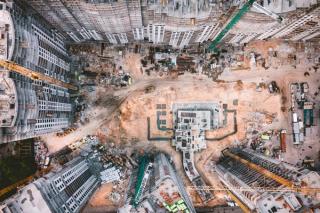
Cultural heritage: Indigenous and cultural heritage values driving sustainable development
by Flavia Kiperman
View post

Have you ever been enjoying your day and thought “Wow, that sound is really annoying!”? This unwanted sound is called “Noise”. In his article Part 1 Expert Answers: What is a Noise Impact Assessment?, Dan Clayton, Technical Discipline Manager for Acoustics, Noise and Vibration, defined noise as a ‘pollutant’ - in this article we’ll cover what noise pollution is, its potential impacts and what we can do about it.
Noise pollution can be defined as “unwanted sound” that is disruptive or harmful to health. The World Health Organization (WHO) indicates there is evidence that the cumulative effects of noise pollution in our daily lives can result in health impacts affecting our physical and psychological well-being.
Noise pollution has a direct link to sound level and its varying associated parameters (Leq, Lmax, L10, L90, Lden etc.). The characteristics of an acoustic environment such as tonality, intermittency, and impulsivity can also contribute to noise pollution, and result in sound having a higher level of annoyance. Think of how much more obvious a train whistle is compared to the engine; that is in part due to its tonal characteristics.
For these reasons, noise pollution is regulated in several parts of the world and its impacts require careful consideration and assessment in many applications. To regulate noise pollution, we must first identify and understand its causes.
Noise pollution is caused by many types of sound sources in our lives. It can be localized, affecting just a few people, or widespread and impactful to the greater population.
How we experience and how we feel about these sound sources varies from person to person. There is, however, an acoustics consultants’ consensus on the most common sound sources that contribute to noise pollution. These are:
Some of the most significant noise pollution in our daily lives comes from transportation, industry and construction.
Transportation systems are some of the most significant sources for two reasons: They are prevalent in our society, and most people need to live near transportation systems. Road, rail, and aircraft-related sound accounts for most noise pollution in cities and contribute to what is often referred to as “urban hum”. It has no distinct source but is generally audible in and near urban environments.
Industrial processes are less likely to be near to people than transportation systems, but their impacts can be much more displeasing. They are less consistent in their sound characteristics and more likely to have annoying attributes such as tonality, intermittency, and impulsiveness. Sounds from industrial processes can be less predictable and not something people may get easily accustomed to. Many industrial processes/facilities require permits to operate, indicating their sound emissions comply with applicable guidelines
Most construction-related vehicles are large and operate with high revving engines and sound levels. Many construction tools require hearing protection for their operators, but those outside construction sites often live with the noise pollution these sources create. Construction activities are regularly occurring for infrastructure maintenance and new developments making it arguably one of the most annoying sources of noise pollution.
With so many sources of noise pollution, governments and regulatory agencies continue to adapt and put policies in place to help manage and reduce it. Noise by-laws, land use planning and the efforts of engineers help control these sound sources.
A land use compatibility review is a helpful tool to review sound source and receiver adjacencies and ensure that one will not impact the other. For example: how far can a residential development be situated from a busy roadway or industrial facility, and vice versa.
There are some acoustic control methods that can be used to reduce noise pollution. Noise pollution is typically controlled at the sound source, in the path between source and receiver, or at the receiver. Some examples for the 3 significant groups of sources given above are:
Acoustics engineers, like those on SLR’s Acoustics and Vibration team keep up with ever-changing regulatory frameworks and procedures, and are familiar with causes of and solutions to noise pollution. By understanding the causes of noise pollution, we can assist our client with developing solutions to create comfortable indoor and outdoor environments, ultimately improving the health and well-being for all.

by Flavia Kiperman

by Jasper Schrijvers , Matthew Hoare

by Clodagh Connolly, Nicola Inge, Andres Schottlaender